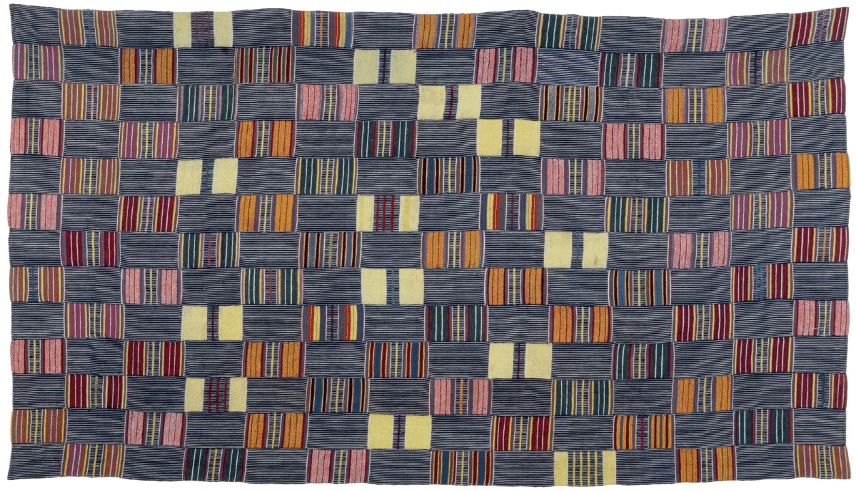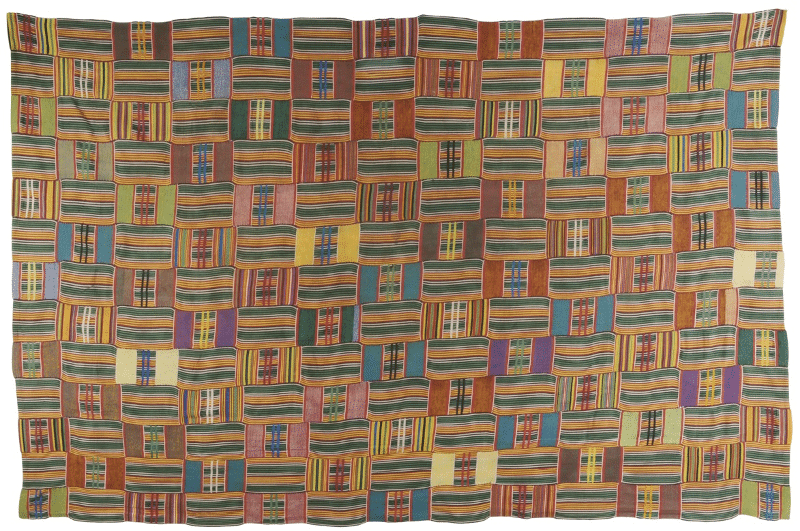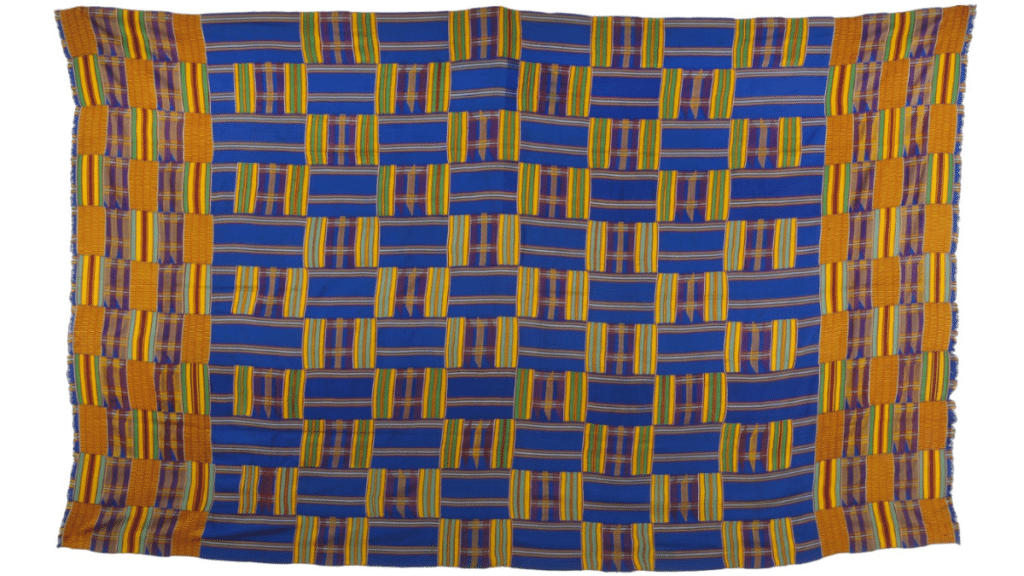Ghana, a vibrant country on the west coast of Africa, is renowned for its rich cultural heritage and vibrant textiles. Among these, Kente cloth stands out as a symbol of identity, prestige, and craftsmanship. Originating from the Ashanti and Ewe ethnic groups, Kente is more than just fabric; it is a tapestry of history and tradition. In this article, we will explore the history, handwoven techniques, and the differences between Ashanti Kente and Ewe Kente cloths.
A Historical Tapestry
The origins of Kente cloth date back to the 17th century. According to Ashanti legend, two friends from the town of Bonwire observed a spider weaving its web and were inspired to create a cloth that mimicked its intricate patterns. The Ashanti king, impressed by their creation, adopted Kente as a royal fabric. Traditionally, it was reserved for special occasions and worn by kings and queens. For those interested in exploring authentic Ashanti Kente cloths, our curated collection of Ashanti Kente offers a variety of exquisite pieces.
The Ewe people, on the other hand, have their own rich tradition of Kente weaving. The history of Ewe Kente is interwoven with the migration stories of the Ewe people who moved from Notsie in present-day Togo to Ghana. They brought with them weaving techniques that evolved into the distinctive Ewe Kente patterns we see today.
The Art of Weaving
Kente weaving is an intricate and labor-intensive process. Both Ashanti and Ewe Kente are woven on narrow looms, with strips that are later sewn together to create the final cloth. However, the techniques and patterns differ significantly between the two.
Ashanti Kente is known for its bright, bold colors and complex patterns. The weavers use a method called “strip weaving,” where each strip of Kente is woven individually and later sewn together. The patterns are often geometric and symmetrical, with names that reflect historical events, proverbs, and philosophical concepts. For example, the “Adwinasa” pattern, meaning “all motifs are used up,” signifies excellence.

Ewe Kente, while also colorful, often features more subdued tones and intricate, non-symmetrical patterns. Ewe weavers incorporate figurative motifs such as animals, plants, and everyday objects into their designs, telling stories and conveying messages through their work. The Ewe technique allows for greater variation in the width of the strips, resulting in a more diverse range of cloths. To see some stunning examples, visit our Ewe Kente collection.

Distinguishing Features
The primary difference between Ashanti and Ewe Kente lies in their aesthetic and symbolic elements. Ashanti Kente is typically characterized by its vibrant colors and geometric patterns, which are meticulously planned and executed. Each color holds a specific meaning: gold represents royalty and wealth, green symbolizes growth and renewal, and blue signifies peacefulness and harmony.
In contrast, Ewe Kente’s designs are more eclectic, often incorporating pictorial representations that convey deeper narratives. The color palette tends to be more muted compared to Ashanti Kente, and the patterns are less rigidly structured. This allows for a more free-flowing and expressive form of storytelling through the cloth.

Celebrating Diversity
Both Ashanti and Ewe Kente are celebrated not only in Ghana but worldwide. They are worn during important ceremonies such as weddings, funerals, and festivals, symbolizing the rich cultural heritage of the Ghanaian people. Kente cloth has also gained international recognition, adorning fashion runways and being embraced by the global diaspora as a symbol of African pride.
In conclusion, the Ashanti and Ewe Kente cloths are more than just beautiful textiles; they are a testament to the rich cultural tapestry of Ghana. Each piece tells a story, preserves history, and embodies the artistic prowess of its weavers. Whether you are drawn to the bold, geometric patterns of Ashanti Kente or the intricate, narrative designs of Ewe Kente, each piece offers a unique glimpse into the heart of Ghanaian culture.
